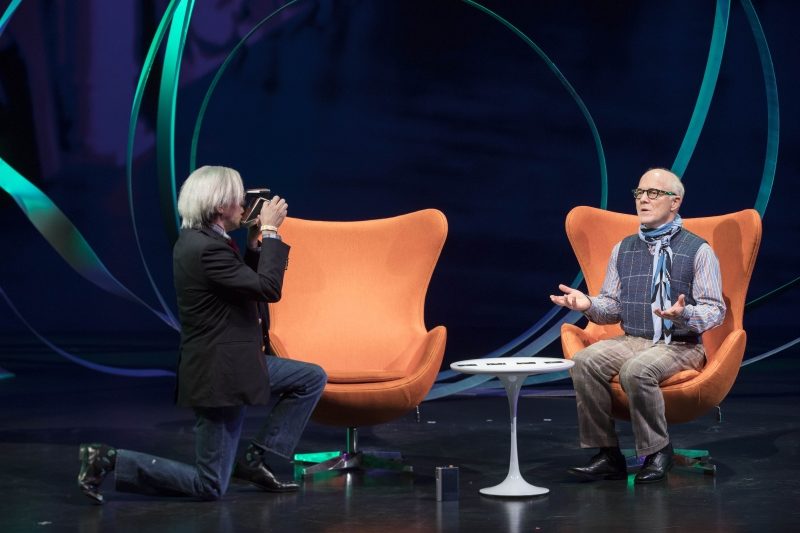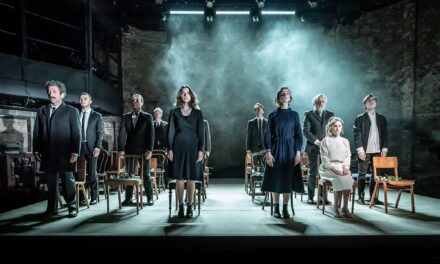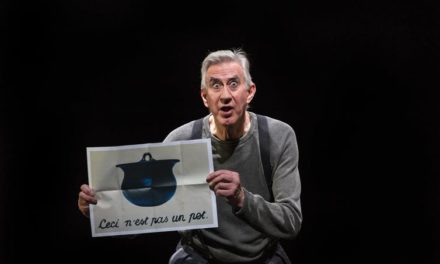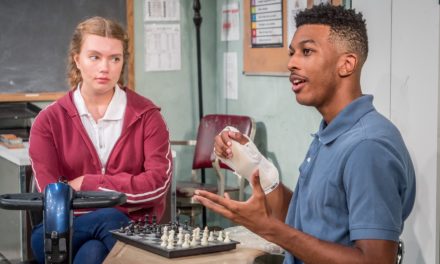As its title seems to indicate, Warholcapote, a two-character play revolves around a relationship so close that both characters are in some way indistinguishable. Both were honored as avant-garde artists of the mid-twentieth century and both were celebrity hounds. Much of Warhol’s art consists of paintings of beautiful and famous actresses, most notably Marilyn Monroe and Elizabeth Taylor, the most prominent movie stars of their time. Nonetheless, he is perhaps most renowned for his pop art paintings of Campbell soup cans and other consumer goods of the middle class of the period.
Truman Capote, a skilled conversationalist, began his writing career at an early age when he became known for his short stories. Capote’s education ended with high school. His first novel, Other Voices, Other Rooms, written at age 23 brought him fame. He wrote plays, films, and novellas, one of which Breakfast At Tiffany’s became a hit movie with Audrey Hepburn as the lead. His last endeavor In Cold Blood was considered the first “non-fiction novel.” Capote was almost as inventive and experimental a writer as Warhol was a visual artist.
Warholcapote, presently making its début at the American Repertory Theatre’s Loeb Drama Center, is built on the men’s own words recorded in 1978 by Warhol who fetishized cassette recorders and never traveled without one fortunately for the play’s adaptor. Rob Roth had been working on the project for years, hoping to develop a play, when he stumbled on 80 minutes of uncatalogued tapes stored in the Warhol Museum. While the scenes and setting stem from Roth’s imagination, the substance of the play is in the conversation of the two artists. He was delighted to find via the tapes that Warhol and Capote had discussed writing a show together.
The young Warhol, shy and lonely, developed a crush on Capote years before their friendship came into being. His persistent fan letters caused Capote to drop him. Eventually, they met up at Studio 54, the mecca of the rich and famous. Warhol was now a member of this coterie.
By 1978, they were middle-aged, more inclined to reminisce, gossip, and joke than innovate. There are very funny moments, largely coming from Capote’s stories.
Most of the play has them sitting in two chairs behind a small round table, which according to Kevin Adams’ brilliant lighting of the moment are orange, maroon or fuchsia. Projections such as a large tape cassette inscribed with the words Warholcapote and lighting changes are used to introduce new scenes. The most vivid are symbolic tapes of varying colors that surround the actors.
Stephen Spinella is convincing as Andy Warhol in a signature white wig and glasses, odd clothing, and despite his notoriety, still retiring. Dan Butler, who was cast only days before the opening due to the withdrawal of the previous actor, turned in an impressive performance as the urbane Capote. Credit is due to both actors for their ability to overcome the difficult circumstances.
Despite its interest, for many Warholcapote is a learning experience rather than a theatrical one. There is little tension, emotion, or conflict.
Warholcapote continues at the Loeb Drama Center until October 13, 2017
This post originally appeared in Capital Critics’ Circle on September 28, 2017 and has been reposted with permission.
This post was written by the author in their personal capacity.The opinions expressed in this article are the author’s own and do not reflect the view of The Theatre Times, their staff or collaborators.
This post was written by Jane Baldwin.
The views expressed here belong to the author and do not necessarily reflect our views and opinions.

















